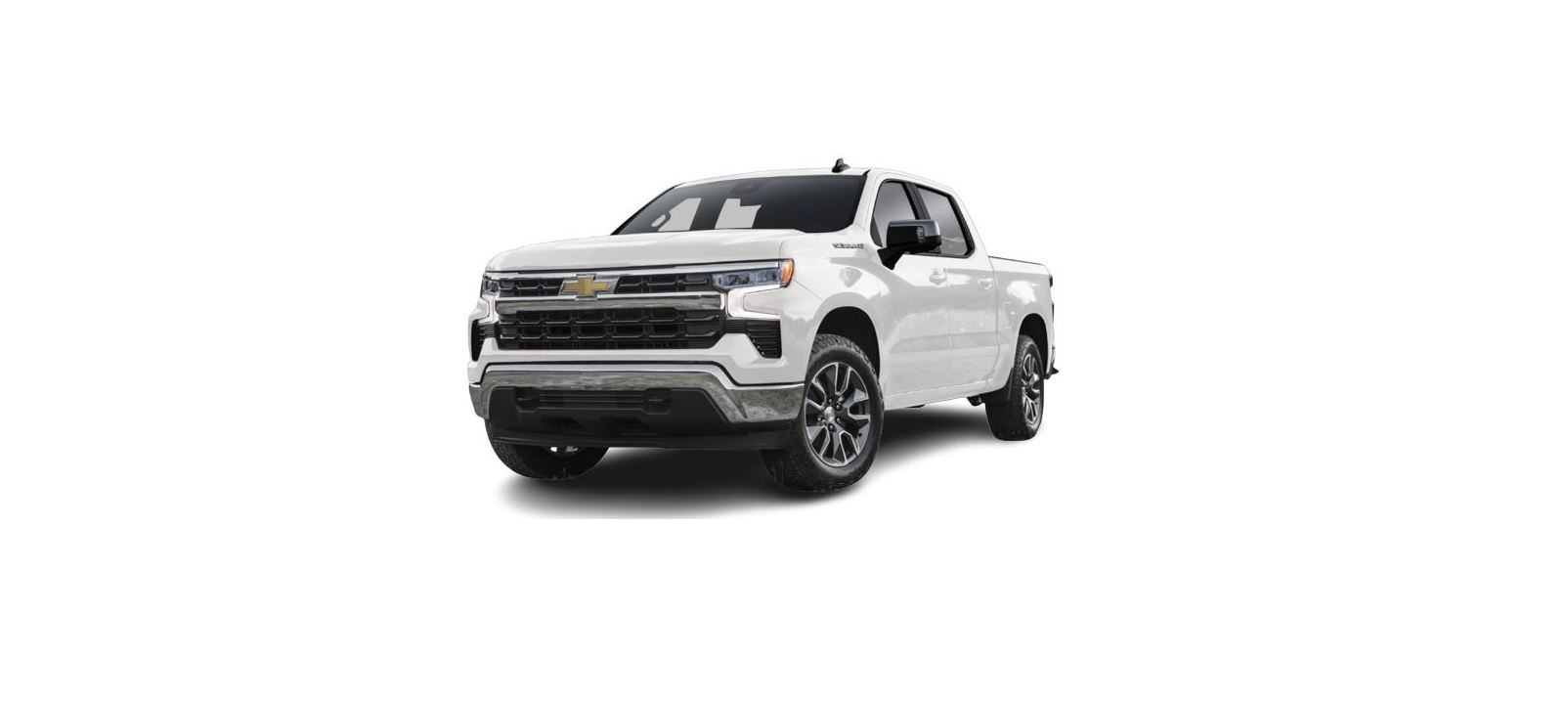2022 Chevrolet Silverado 1500 Towing the Vehicle

Towing the Vehicle
Caution
- Incorrectly transporting a disabled vehicle may cause damage to the vehicle. Use proper tire straps to secure the vehicle to the flatbed tow truck. Do not strap or hook to any frame, underbody, or suspension component not specified below. Do not move vehicles with drive axle tires on the ground. Damage is not covered by the vehicle warranty
- The vehicle may be equipped with an electric parking brake and/or an electronic shifter. In the event of a loss of 12-volt battery power, the electric parking brake cannot be released, and the vehicle cannot be shifted to N (Neutral). Tire skates or dollies must be used under the non-rolling tires to prevent damage while loading/unloading the vehicle. Dragging the vehicle will cause damage not covered by the vehicle warranty.
- The vehicle may be equipped with a tow eye. Improper use of the tow eye may cause damage to the vehicle and is not covered by the vehicle warranty. If equipped, use the tow eye to load the vehicle onto a flatbed tow truck from a flat road surface, or to move the vehicle a very short distance at a walking pace. The tow eye is not designed for off-road recovery. The vehicle must be in N (Neutral) with the electric parking brake released when using the tow eye.
Contact a professional towing service if the disabled vehicle must be transported. GM recommends a flatbed tow truck to transport a disabled vehicle. Use ramps to help reduce approach angles, if necessary. If equipped, a tow eye may be located near the spare tire or emergency jack. Do not use the tow eye to pull the vehicle from the snow, mud, sand, or ditch. Tow eye threads may have right or left-hand threads. Use caution when installing or removing the tow eye. The vehicle must be in N (Neutral) and the electric parking brake must be released when loading the vehicle onto a flatbed tow truck.
Vehicles Equipped with Electronic Shifter
The vehicle must be in N (Neutral) and the electric parking brake must be released when loading the vehicle onto a flatbed tow truck.
- If the vehicle is equipped with car wash mode and has 12-volt battery power, refer to “Car Wash Mode” under Automatic Transmission (Mechanical Shifter) 0 226 or Automatic Transmission (Electronic Shifter) 229 to place the vehicle in N (Neutral).
- If the 12-volt battery is dead and/or the engine will not start, the vehicle will not move. Try to jump-start the vehicle. Refer to Jump Starting – North America 0 404 and if the jump start is successful, retry the “Car Wash Mode” procedure. Vehicles Equipped with Mechanical Transmission Range Select Shifter
- The vehicle must be in N (Neutral) and the Electric Parking Brake must be released when loading the vehicle onto a flatbed tow truck. If the 12-volt battery is dead and/or Electric Parking Brake is not released, the vehicle will not move. Try to jump-start the vehicle with a known good 12-volt battery, shift the car into N (Neutral), and release the Electric Parking Brake. Refer to Jump Starting – North America 0 404.
If jump starting is unsuccessful, the vehicle will not move. Tire skates or dollies must be used under the non-rolling tires to prevent vehicle damage.
Front Attachment Points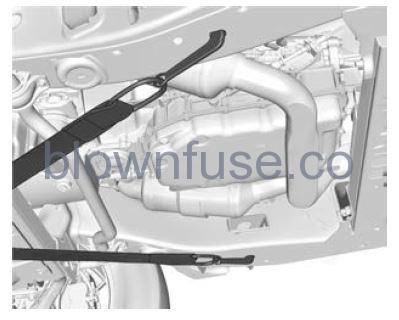
The vehicle is equipped with specific attachment points to be used to pull the vehicle onto a flatbed car carrier from a flat road surface. Do not use these attachment points to pull the vehicle from snow, mud or sand.
Recreational Vehicle Towing
Recreational vehicle towing means towing the vehicle behind another vehicle, such as a motor home. The two most common types of recreational vehicle towing are dinghy and dolly towing. Dinghy towing is towing the vehicle with all four wheels on the ground. Dolly towing is towing the vehicle with two wheels on the ground and two wheels on a dolly. Here are some important things to consider before recreational vehicle towing:
- Before towing the vehicle, become familiar with the local laws that apply to recreational vehicle towing. These laws may vary by region.
- The towing capacity of the towing vehicle. Read the tow vehicle manufacturer’s recommendations.
- How far the vehicle can be towed. Some vehicles have restrictions on how far and how long the vehicle can be towed.
- Whether the vehicle has the proper towing equipment. See your dealer or trailering professional for additional advice and equipment recommendations.
- Whether the vehicle is ready to be towed. Just as preparing the vehicle for a long trip, make sure the vehicle is prepared to be towed.
Follow the tow vehicle manufacturer’s instructions. See your dealer or trailering professional for additional advice and equipment recommendations.
Caution
The use of a shield mounted in front of the vehicle grille could restrict airflow and cause damage to the transmission. The repairs would not be covered by the vehicle warranty. If using a shield, only use one that attaches to the towing vehicle.
Dinghy Towing (Two-Wheel-Drive Vehicles and Vehicles with a Single-Speed Transfer Case)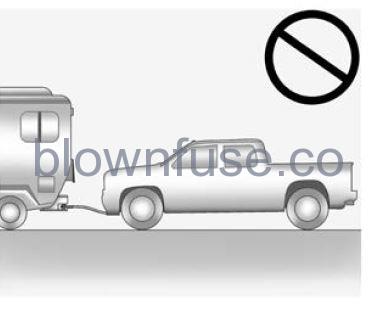
Caution If a vehicle with two-wheel drive or a single-speed transfer case is towed with all four wheels on the ground, the drivetrain components could be damaged. The repairs would not be covered by the vehicle warranty.
Two-wheel-drive vehicles and vehicles with a single-speed transfer case should not be towed with all four wheels on the ground.
Dinghy Towing (Vehicles with a Two-Speed Transfer Case)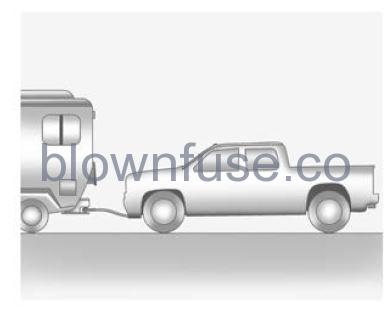
Only dinghy tow four-wheel-drive vehicles with a two-speed transfer case that have an N (Neutral) and a 4 n (Four-Wheel Drive Low) setting.
Warning Shifting a four-wheel-drive vehicle’s transfer case into N (Neutral) can allow the vehicle to move even if the transmission is in P (Park). You or others could be injured. Set the parking brake and use wheel blocks before shifting the transfer case to N (Neutral).
To dinghy tow
- Position the vehicle being towed behind the tow vehicle, facing forward and on a level surface.
- Securely attach the vehicle being towed to the tow vehicle.
- Apply the parking brake and start the engine.
- Shift the transfer case to N (Neutral). See “Shifting into N (Neutral)” under Four-Wheel Drive 0 236.
- With the engine running, release the parking brake and verify that the transfer case is in N (Neutral) by shifting the transmission to D (Drive) and then to R (Reverse). There should be no movement while shifting the transmission.
- Shift the transmission to P (Park).
- Release the parking brake.
- Turn the vehicle off.
- Turn on the ignition without starting the engine. To do this, take your foot off the brake pedal then press and hold ENGINE START/STOP for five seconds until the green light on the button is illuminated. See Ignition Positions 217.
- Disconnect the negative (–) battery cable. See “Negative Battery Cable Disconnection” in Battery – North America 0 357.
- Caution If the steering column is locked, vehicle damage may occur.
- Move the steering wheel to make sure the steering column is unlocked.
- For column shift transmissions, verify the transmission is in P (Park). Failing to put the transmission into Park before flat towing can damage the transmission.
- Keep the RKE transmitter outside of the vehicle and manually lock the doors. Access the vehicle by using the key in the door lock. See Door Locks 18.
Disconnecting the Towed Vehicle
Before disconnecting from the tow vehicle
- Park on a level surface. Secure the vehicle with wheel blocks.
- Re-connect the negative (–) battery. See Battery – North America 0 357.
- Turn on the ignition without starting the engine. With your foot off the brake pedal, press and hold ENGINE START/ STOP for five seconds until the green light comes on the button is illuminated. See Ignition Positions 0 217.
- Set the parking brake. See Electric Parking Brake 0 242.
- Disconnect from the tow vehicle.
- Start the engine.
- Shift the transmission to N (Neutral).
- Shift the transfer case to 2 m (Two-Wheel Drive High). When the shift to 2 m (Two-Wheel Drive High) is complete, the light in the instrument cluster will stop flashing and stay lit. See Four-Wheel-Drive Light 117.
- Check that the vehicle is in 2 m (Two-Wheel Drive High) by starting the engine and shifting the transmission to D (Drive) and then to R (Reverse). There should be movement of the vehicle while shifting.
- Shift the transmission to P (Park) and turn off the ignition.
- Release the parking brake and remove the wheel blocks.
- Reset any lost presets. The outside temperature display will default to 0 °C (32 °F) but will reset with normal usage.
Dolly Towing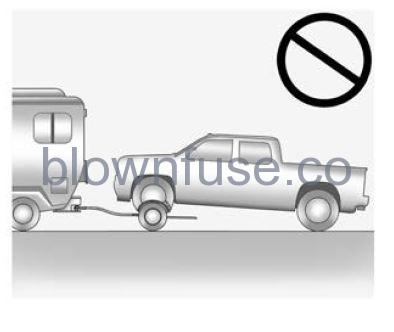
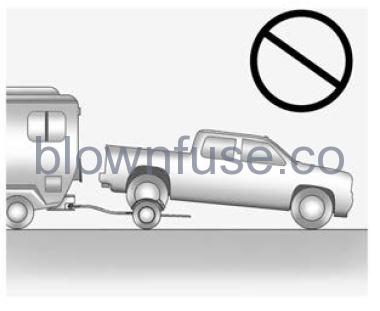
Caution
Do not tow this vehicle with two wheels on the ground, or vehicle damage could occur. This damage would not be covered by the vehicle warranty.
Dolly towing this vehicle is not allowed with either the front or the rear tires on the ground for a two-wheel drive or four-wheel drive, regardless of the transfer case.
